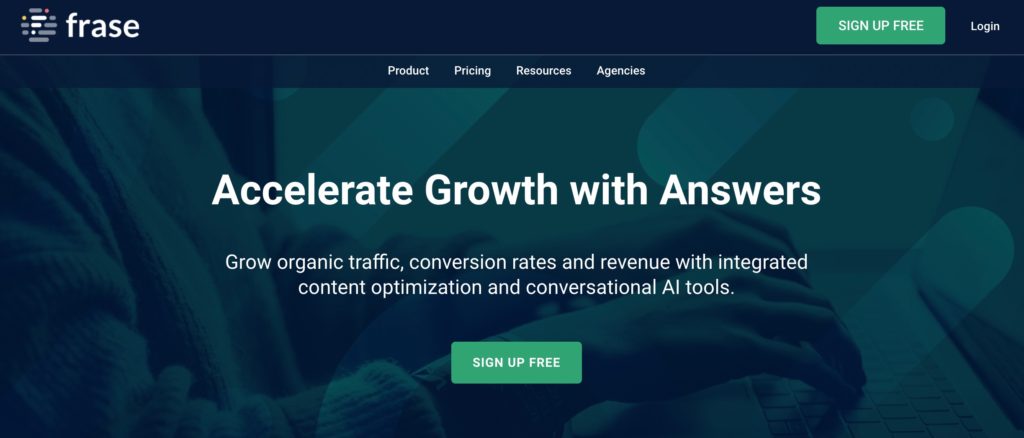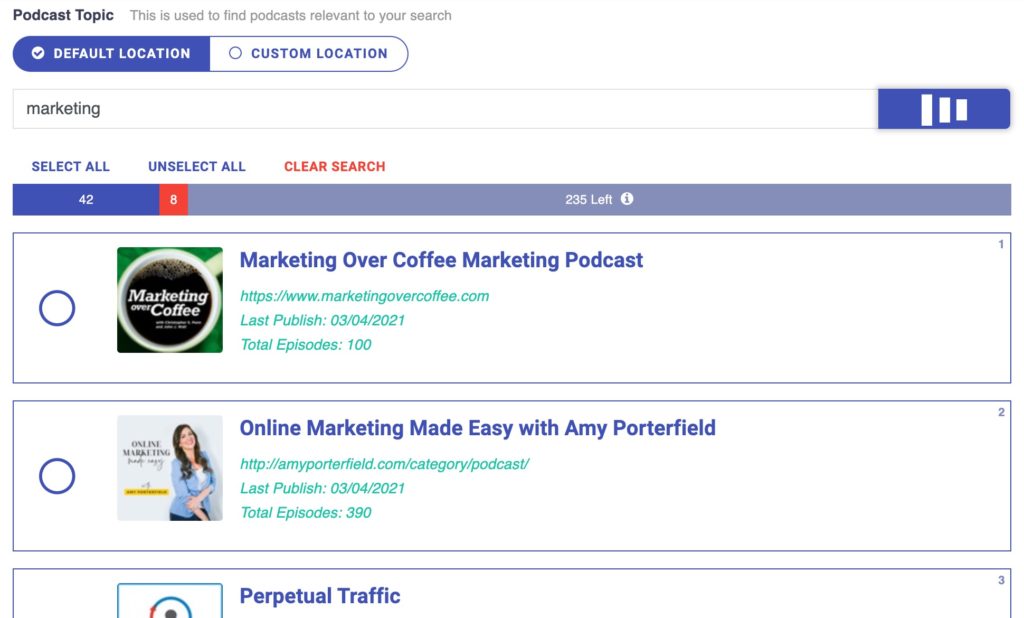Contextual Links: A Guide to Rank Higher in Search Engines and Get More Traffic
This article is a guest post from marketer and link building expert, Vivek Raju.
Every website needs to rank high on search engines to get traffic (that you don’t need to pay for). Although on-page SEO and content is important, links still play a significant role in SEO. There are many ways to build links, but many of them can be big time investments.
Contextual links, however, are the most effective way to boost your SEO (search engine optimization) and visibility on search engines.
This post will explain what contextual links are, and why they are essential for your site.
We’ll also talk about the best strategies for contextual link building. You can use these tips to get more links from quality sites for higher search rankings.
What is a Contextual Link?
A “Contextual Link” is a text link within a paragraph in which a related idea or context is found.
Contextual link building is an SEO strategy that builds links within relevant content on other websites where your target audience spends their time online.
For example, let’s say that you have an article all about social media marketing trends. You find another article that mentions trends in digital marketing, and it has a paragraph or section all about social media marketing trends. That section on that article would be a perfect contextual link to your article.
Contextual linking is an excellent method for building backlinks from high-quality sites while also generating exposure for your business. They increase brand awareness and trustworthiness among potential customers unaware of your brand or services. If done right, visitors to those sites will remember you when they make future purchase decisions.
In most cases, contextual links are “editorial links”, i.e., those embedded as external links in another website’s content. These are great because you’re targeting relevant people and passing link juice to your website.
Best practices for contextual link building
Choose relevant websites
Build relationships with relevant websites and get them to link back to you.
These websites don’t have to be in the same niche (as some people claim); these can be from a related industry where they are talking about a topic related to your service.
Avoid completely-unrelated categories where there is zero relevance industry-wise and topic-wise.
Pick sites with high editorial standards
Getting just one link from a high-quality website is worth much more than getting links from ten low-quality sites.
For evaluating site quality, professionals often refer to a website’s Domain Authority (DA) or Domain Rating (DR) metrics.
It’s a good idea to identify which websites have high-quality content. The higher the quality, the harder it is to get your piece featured. Like any good relationship, it takes time and effort to establish and maintain, but the more work you put in now, the richer your contextual links will be later!
Written content should be contextual
Sites should link back to your website, where you offer additional information about a related topic on your blog post. Steer clear of websites providing paid links to anyone, regardless of site relevance and quality. Chances are, these can do you more harm than good.
Strategies to build contextual links
While building contextual links isn’t the easiest of tasks, there are some ways to go about it.
Create content that is worthy of a backlink
The first key to building contextual links is creating high-quality linkable assets.
When someone decides to give you a backlink, they are effectively recommending you to their audience, so it’s important to write something they want to share with their audience. Free tools, white paper, original research, ultimate guides, and thought leadership articles are good examples of linkable assets.
Create content that positions you as a leader
Your brand can benefit tremendously by positioning itself as a leader. By creating authority content, you’re demonstrating your knowledge and expertise to your audience. You’re also building trust and credibility with them. Create material that is original, thought-provoking, and, most importantly, useful. As people start perceiving you as a leader, they will trust you and feel more comfortable linking back to you.
The best content solves a problem, engages you, or teaches you something. A good rule of thumb for creating content is to consider what problem you’d like to solve for your audience. Solving a problem helps your target audience save time, reduce frustration, and perceive you as a more credible brand. It will enhance your brand and attract new clients. You can use a tool like Frase to understand your visitors’ questions and join in their conversations.

People will start mentioning you in their articles when you are seen as an expert in your category, earning you more contextual links.
Use broken link building to improve search rankings
The broken link building strategy is an effective way to build editorial links.
Here’s how it works:
- Find a broken page (404 error) and then extract all the domains that link to it.
- After this, contact all these websites to let them know they have broken links.
- Offer them your page as an alternative.
I use Postaga to automate my outreach campaigns and ensure high open rates.
Brand awareness and link building through podcasting
Build relationships with podcasters who can interview you!

Reach out to podcasters and volunteer for an interview highlighting your area of expertise.
Check out podcast directories or use a tool like Postaga to find podcasts relevant to your niche.

Find a podcast where you can contribute and add value.
Now reach out to the host and pitch your idea. If they accept, set up a time to record your interview.
Don’t be afraid to reach out to people who don’t have large followings. Even though they don’t have a huge fanbase right now, that doesn’t mean they won’t grow.
See if they have a strong social presence or a high-authority domain when you make your prospect list.
Most people link back to you in their show notes, which are hosted on their site. You end up getting a backlink and a mention on their site.
Write guest posts for contextual link building
Write guest posts for authoritative sources to get quality contextual backlinks to your site. Make sure to vet websites before you write a guest post for them. When possible, mention your company in the article.
Writers should make a list of sites where they want to be featured.
One other tip – look to your competitors. Guest posting is a very common link building strategy. So, you can use a backlink search tool to see your competitors’ backlinks, look through them, see which (if any) appear to be guest posts they’ve published, and add those sites to your list.
Once you have a list of your dream websites, start reaching out to them to see if you can get a guest post.
Reach out to sites in your niche or complementary niches so you can contextualize the article easily.
Be sure to include a sentence or two about why you are reaching out and share your article idea so they know what to expect.
It’s also important to be transparent and mention that you will be adding a contextual backlink to your website if possible.
The best way is to reach out is via email or over social media.
The pitch should focus on what it offers them, not just how you intend to promote your business.
Tips for guest blogging:
- The target website should have the same user base that you’re trying to target to ensure relevant traffic because you want more sales at the end of the day and not just an increase in traffic.
For example, if you’re targeting single moms for your service, a male-dominated user base will not be the best fit for you.
- Choose sites with high editorial quality.
- See if they have a good frequency of publishing and a sizable audience
- Pick sites that have published a guest post in the last six months.
- Avoid sites that accept guest posts for money.
- Avoid keyword stuffing in your anchor text. Use descriptive phrases and long-tail keywords instead of exact match keywords; you can always balance this with your internal links anchor text.
- Always prioritize linking for users over search engine ranking. Use relevant queries and articles when linking back to your site.
Use cross-promotion for contextual linking
Work with complementary brands to create cross-promotional opportunities. You can do it through a webinar, Youtube live video, or another way that aids in contextual linking.
Many popular brands do influencer marketing to promote their company and increase brand awareness. Cross-promotion can be as simple as sharing a blog post from another website in your email newsletter or retweeting an article on Twitter.
Conclusion
There are multiple ways to generate contextual backlinks to your website. The possibilities are endless! But keep in mind that not all links are equal, and it’s critical to focus on quality over quantity. If this sounds like too much work or you just don’t have time, use a tool like Postaga to automate the difficult parts of outreach so you can focus on building relationships. Which strategy has worked for you? I would love to hear from you!

Vivek is a data-driven content marketer with a deep-set interest in branding. He believes brands bring a sense of familiarity in a world of unknowns. So he helps purpose-driven companies become stellar brands by clarifying their messaging and creating strategic content. Vivek likes to watch Netflix or go for runs when he’s not clacking away at his keyboard.
Free 14-Day Trial
Start building relationships now with your fully-featured 14-day trial!
How We Compare
Terms | Done-For-You Terms | Privacy | Write For Us | Press
© 2025 Postaga. All Rights Reserved. Made with 
